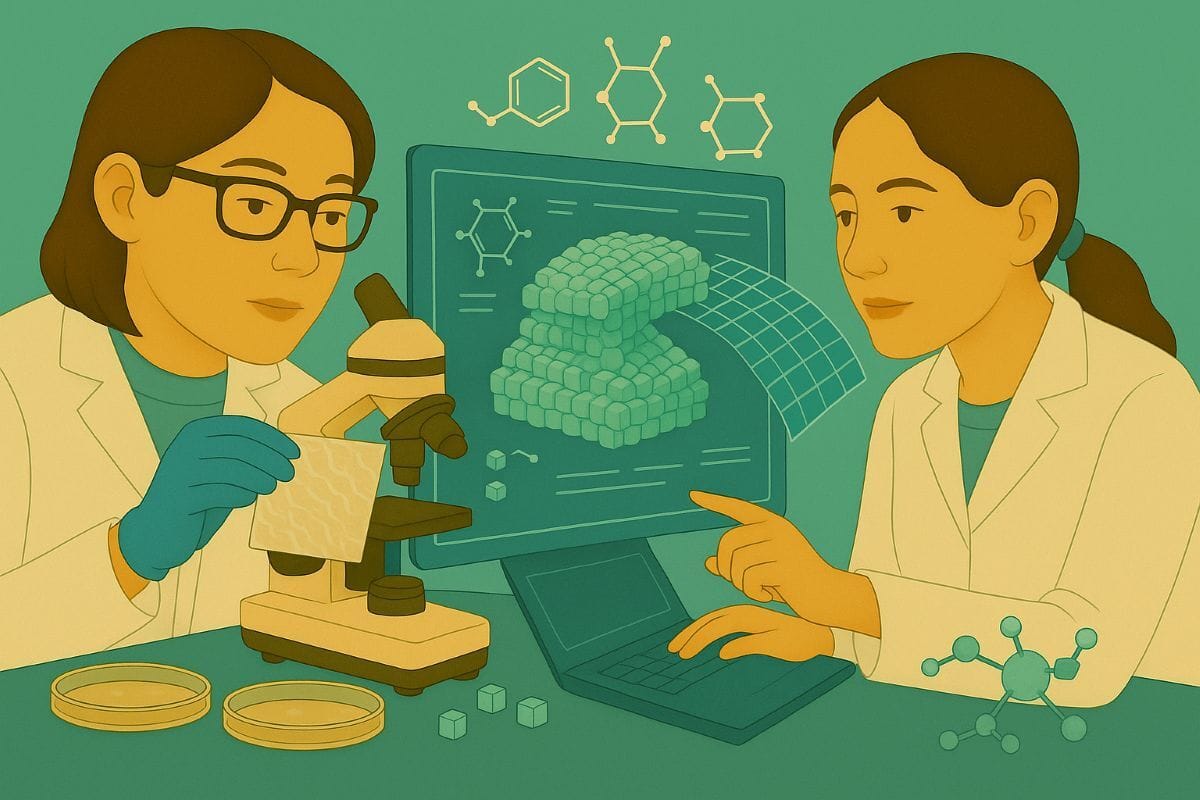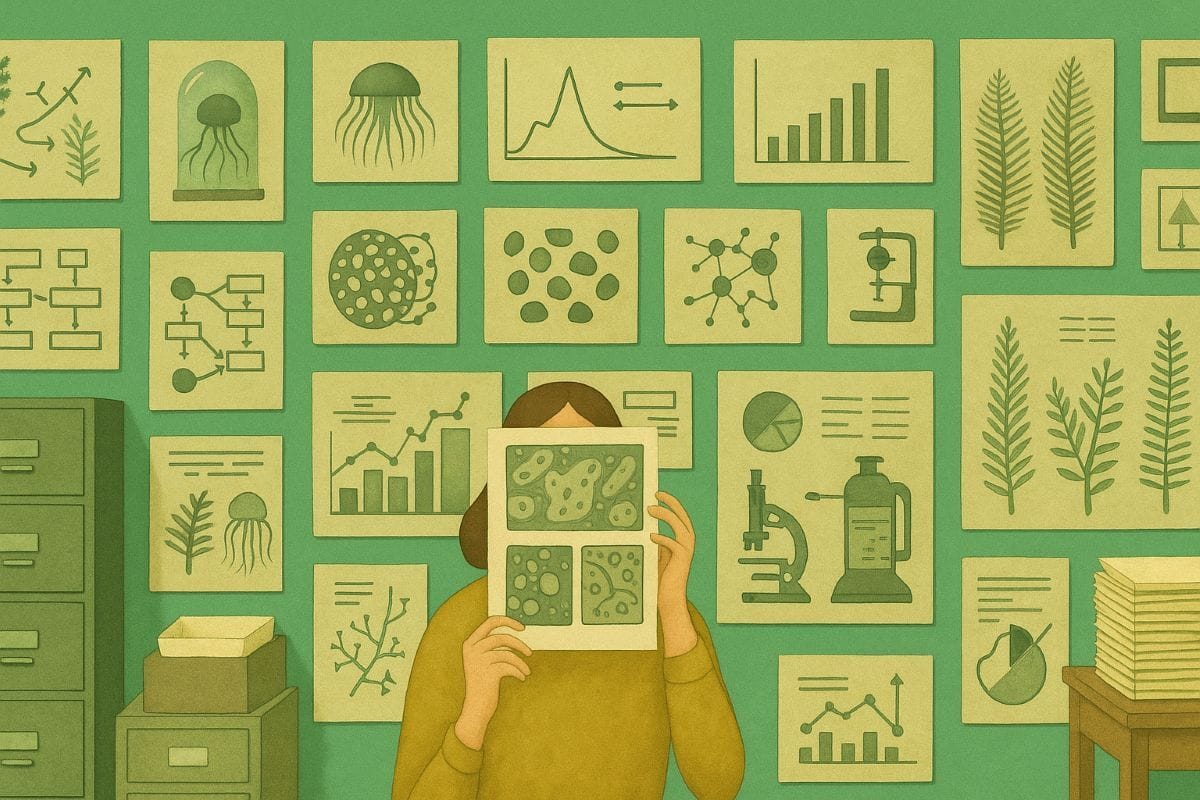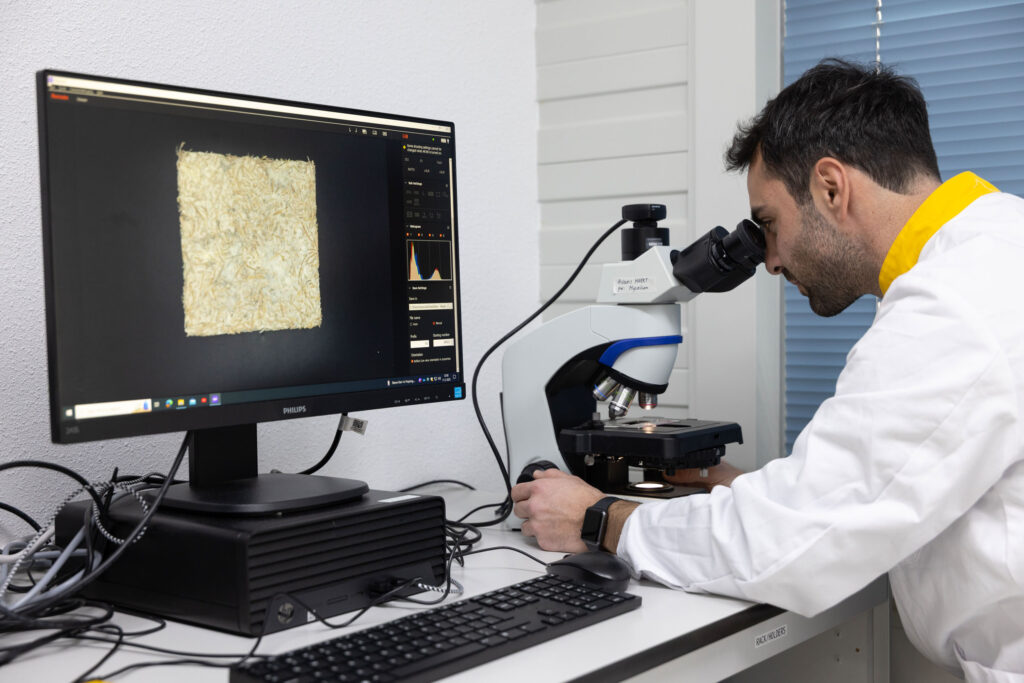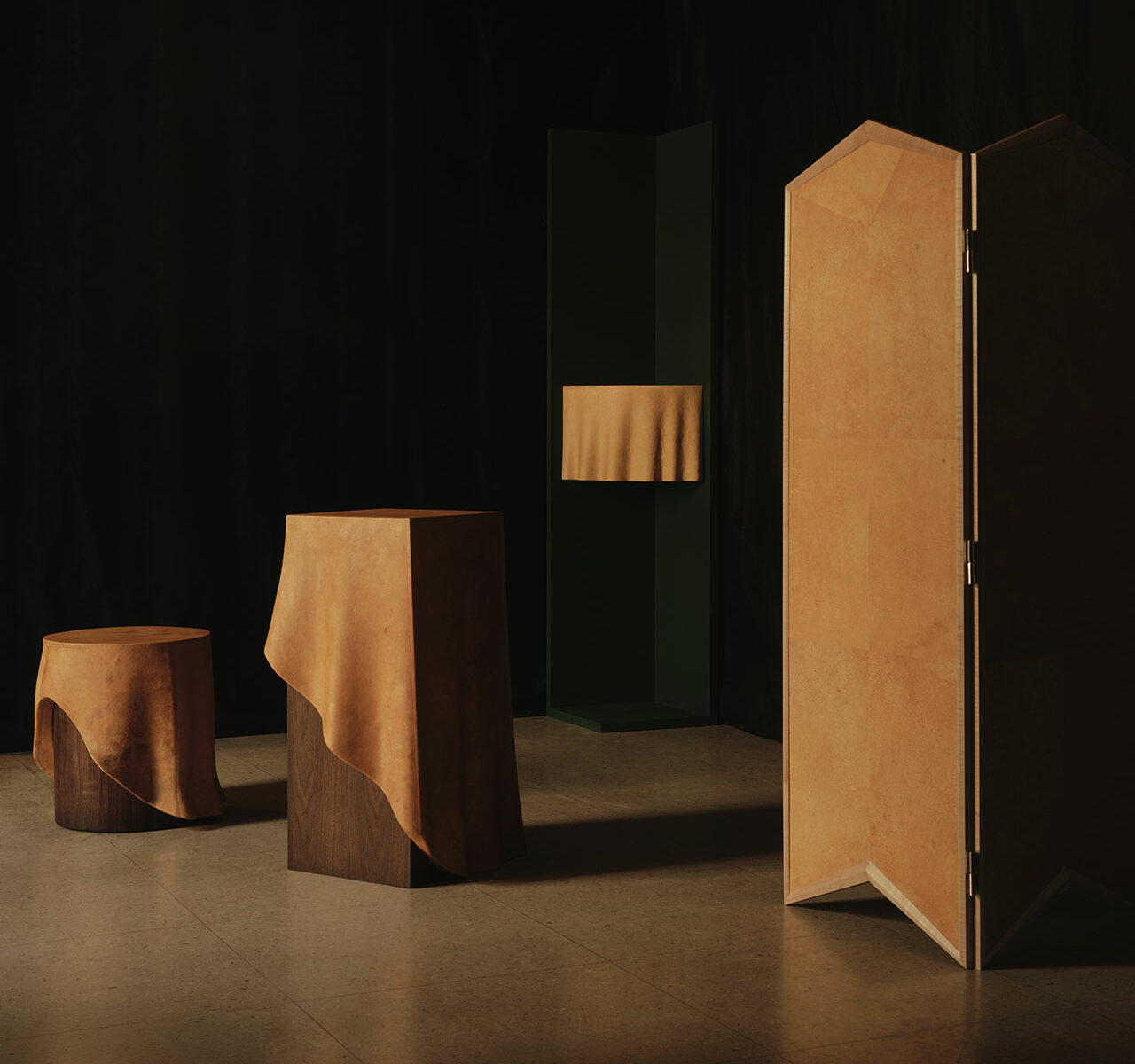- Biodesign Academy
- Posts
- History and Scope of AI in Biodesign
History and Scope of AI in Biodesign
A Career-Oriented Guide for Students & Educators
Adam the Sleepless Researcher
It was 2009, and in a laboratory at the University of Manchester, something intriguing was happening. While human scientists slept, Adam was working. Not Adam the graduate student, but Adam the machine.
Developed by Ross King’s group, Adam became the world’s first robot scientist: autonomously generating hypotheses about yeast genetics (specifically, Saccharomyces cerevisiae), formulating and executing experiments, and interpreting the resulting data; all with little or no human intervention.
Adam’s greatest achievement was independently deducing functions for previously uncharacterized genes in yeast, marking the first time a machine had autonomously expanded scientific knowledge. This milestone, recognized at the time as a scientific first, hinted at a new era, where machines could not only analyze existing biological knowledge but discover new mechanisms themselves.
Adam’s true breakthrough, however, was not the specific gene discoveries. It was proof that machines could now autonomously explore and design in biology. Once machines could discover how biology worked, it opened the door for them to start designing with biology itself.
Fast-forward fifteen years: Artificial intelligence systems are now used to engineer enzymes that can break down plastic waste in days instead of centuries, a feat made possible by machine-learning models that design improved protein catalysts faster than traditional methods. AI also orchestrates the growth of fungal (mycelium) materials, enabling sustainable production of leather alternatives for the luxury market and eco-friendly construction materials.
And AI's capabilities in predicting protein folding, most notably with the advent of AlphaFold, have revolutionized biology, allowing researchers to model new proteins before they’re ever synthesized in the lab. As a result, the creative economy is being rebuilt around living, programmable materials: AI isn’t just accelerating biodesign, it is actively directing the process, turning the medium of creation from metal and plastic to life itself.
Builders of Adam's Beginning (1990s)
To understand how Adam became possible, we need to step back to the 1990s, when computational biology was quietly laying revolutionary groundwork. Here are notable milestones from this formative era:
1994 marked the inaugural Critical Assessment of Structure Prediction (CASP) competition. This biennial, worldwide experiment brought together scientists to predict protein structures from amino acid sequences using computational methods. CASP established a rigorous testing ground for algorithmic approaches, fueling progress in protein modeling.
In 1995, the first complete genome of a free-living organism, Haemophilus influenzae Rd, was sequenced (sometimes colloquially cited as '1997,' but the publication was in 1995), providing a digital blueprint of life. This milestone sparked a surge in computational genomics and tool development.
The late 1990s saw the emergence of commercial DNA synthesis services. While Synthetic Genomics itself was founded in 2005, advances in automated DNA assembly and gene synthesis in the late 1990s, and pioneering companies providing these services, enabled researchers to go from digital genetic designs to real, experimental DNA more rapidly than ever before.
Pharmaceutical research underwent a digital transformation with companies such as Schrödinger, founded in 1990, developing sophisticated molecular modeling software. Early platforms laid the foundations for later packages like Maestro, providing researchers with "AutoCAD for atoms" to simulate and design molecular interactions.
None of these researchers knew they were building Adam's foundation. The computational literacy enabling machines to design with biology. But every algorithm and molecular model from this era set the stage for breakthroughs in autonomous scientific discovery.
Adam’s Successors (2009-2020)
A new approach to scientific research emerged: cognitive augmentation. Rather than simply automating tasks, AI systems shifted the role of scientists. They went from being hands-on experimenters to system architects, designing the very AI that would, in turn, design experiments.
In the field of drug discovery, machine learning platforms accelerated innovation. In 2015, for example, Atomwise's AtomNet platform used deep convolutional neural networks (CNNs) to virtually screen millions of compounds. This allowed it to predict which ones were most likely to be biologically active. This capability, later applied to drug targets like Ebola, significantly cut down the time needed to find promising drug candidates.
This progress culminated in DeepMind's AlphaFold system. At the CASP14 competition in 2020, AlphaFold predicted protein structures with near-experimental accuracy. While some called it a "solution to the protein-folding problem," most in the scientific community recognized it as a major breakthrough. This deep learning system, trained on vast amounts of protein sequence and structure data, predicts a protein's 3D shape with precision by combining evolutionary information with geometric rules.
For molecular designers, AlphaFold was a notable breakthrough. It allowed them to predict how a new protein would fold before synthesizing it, essentially bridging the gap between a biological idea and its creation.
In 2022, DeepMind and the European Bioinformatics Institute (EMBL-EBI) made the AlphaFold Protein Structure Database publicly available, containing over 200 million protein structures. This made the technology accessible to researchers globally. This contrasted with newer models like Meta AI's ESMFold, which, while faster, sometimes sacrifices accuracy for speed.
AI Co-Scientist: An Era of Discovery (2025)
In early 2025, Google DeepMind and Google Research unveiled the AI co-scientist, a multi-agent AI system designed to act as a virtual collaborator for scientists. Building on the principles of earlier robot scientists like Adam, this system operates at a scale previously unseen in AI-assisted research.
The AI co-scientist is built on Gemini 2.0 and continuously processes scientific literature, datasets, and experimental records from the web. It uses advanced language models and multi-modal AI to generate hypotheses, check them against existing knowledge, and propose molecular sequences for in silico testing: all before they ever reach a physical lab.
What makes it particularly notable is its design as a multi-agent system. It employs specialized agents for generation, reflection, ranking, and evolution, which work together to generate, debate, and refine hypotheses. This allows it to integrate and reason across different disciplines. The system can suggest what might work and provides a rationale with confidence scores and relevant precedents.
The AI co-scientist can rapidly simulate parts of the experimental pipeline, from molecular design to predicting functional outcomes. This allows for a level of rapid iteration that dramatically accelerates the discovery process. Its initial validation has focused on biomedical areas like drug repurposing and novel target discovery. For example, it successfully suggested new drug candidates for acute myeloid leukemia that were later validated in lab experiments.
This system represents a significant step toward a future where human creativity and machine intelligence work together to accelerate scientific breakthroughs.

Additional Case Studies
Enzymatic Plastic Remediation
Researchers have engineered FAST-PETase, an enzyme designed to break down PET plastics more efficiently than its natural counterparts. This enzyme is a variant of the naturally occurring PETase, which was first discovered in bacteria. Scientists at the University of Texas at Austin used machine learning to predict specific mutations that would enhance the enzyme's performance.
This breakthrough allows the enzyme to break down PET plastics at ambient temperatures (below 50°C), making the process more energy-efficient and scalable than traditional methods that require high heat. This technology has the potential to enable low-energy, on-site plastic recycling. By breaking down plastics into their original components, the process supports a circular manufacturing system, where waste is continually re-processed into reusable raw materials, which could reduce reliance on landfills and fossil fuels for new plastic production.
Space-Age Food
Solar Foods is a company that uses AI to optimize the production of a microbial protein called Solein®. This protein is produced from a process that uses only carbon dioxide, electricity, and water.
The technology enables food production in resource-scarce environments, offering a sustainable protein source for regions affected by climate change or supply chain disruptions. Its independence from traditional agriculture drastically reduces the need for land and water. The technology has also been explored for use in space exploration, as it can create food from resources like exhaled CO₂ and is a promising solution for long-duration missions.

AI as Creative Design Partner
In the current decade, AI has moved from a research tool to a collaborator in design, influencing how we create materials and products.
Designing with Living Systems
Companies like MycoWorks use AI to manage the growth of mycelium, the root-like structure of fungi. Algorithms are used to determine the right timing for nutrient introduction and environmental adjustments to achieve specific textures and properties, resulting in a bio-leather alternative known as Reishi™. MycoWorks has been noted for its ability to produce materials with a natural, organic feel that are comparable to luxury animal leather.
Modern Synthesis applies machine learning to the cultivation of bacterial cellulose. This process helps them predict which combinations of bacterial strains will produce desired textile properties, enabling the design of materials at a cellular level. The company's technology is designed to produce durable, high-quality alternatives to animal and synthetic leathers, with a focus on reducing emissions and plastic pollution.
Expanding this approach, the architectural firm ecoLogicStudio, founded by Claudia Pasquero and Marco Poletto, uses AI to design broader ecosystems. In their book "Biodesign in the Age of Artificial Intelligence: Deep Green," they explore how AI can be used in projects to create "bio-digital" architectures. For example, in a project called the BioCurtain, they have used AI to predict algae growth patterns for building façades.
This work demonstrates how AI can be used to create structures that serve ecological functions, like purifying air, and extends biodesign principles from the lab into the built environment.
Addressing Creative Skepticism
A common question is whether biodesign is truly a creative field or just a form of bioengineering. This overlooks the new possibilities that come with designing with living materials. For designers, material choice has always been a key creative decision. When biodesigners select DNA sequences, they are making design choices that offer far more potential than traditional materials.
Living materials can be designed to change over time, such as by growing stronger, shifting colours, self-repairing, or responding to touch. AI systems allow designers to consider questions that were previously impossible to answer: How will this living textile's scent evolve over time? How will the patterns of bacteria shift in different lighting conditions?
These are not simply engineering constraints; they are new opportunities for creative expression. In this sense, biodesigners act as conductors, using AI to bring a creative vision to life by combining human intent with biological processes
Ethics at the Molecular Level
The most sophisticated design thinking recognizes that values are embedded in design decisions at every scale: including genetic sequences.
In biodesign, every genetic modification carries implications for human health, environmental sustainability, and social equity. When designers choose amino acid sequences, they're making value judgments about biodegradability, energy consumption, and manufacturing accessibility.
This is design ethics at the molecular level: A choice between bacterial strains becomes a decision about resource efficiency and global manufacturing equity. For educators, teaching Value Sensitive Design ensures students understand their role as architects of future biological infrastructure.

Building Your Career in AI x Biodesign
The convergence creates unprecedented opportunities for those who can navigate both domains.
For Students
Develop Bilingual Fluency: Master both biological principles and computational methods. The most valuable professionals think like biologists and code like computer scientists. For example, a designer who understands CRISPR gene-editing mechanics and can also write Python scripts to analyse genomic data can bridge concept and execution without relying on separate teams.
Consider how Rosalind Franklin Institute researchers use both structural biology knowledge and custom AI scripts to accelerate protein imaging: this dual fluency opens doors in research labs, biotech startups, and computational design studios.
Create Hybrid Portfolios: Showcase design thinking applied to biological systems, documenting your journey from inspiration to biological implementation. This might mean starting with a speculative concept: such as a self-healing textile, then using AlphaFold to predict protein structures that could achieve that behaviour, followed by a digital prototype or material swatch.
Highlight each stage in your portfolio to show how ideas evolve into molecularly informed outcomes. For instance, participants in the Biodesign Academy’s AlphaFold Futures Workshop documented their folding experiments alongside speculative applications, producing compelling visual narratives that caught the attention of both design and science audiences.
Join Communities: Contribute to open-source bio-AI tools, participate in iGEM competitions, and engage with design and scientific communities. Real-world example: the iGEM team from TU Delft developed a synthetic biology project on plastic degradation, openly sharing their genetic designs and protocols online: this not only demonstrated technical skill but built valuable global networks.
Similarly, contributing to GitHub repositories for projects like ColabFold or bioinformatics visualization tools can position you within active innovation ecosystems, while participation in creative science communities (like Biofabricate) can expand your collaborative reach beyond traditional disciplinary boundaries.
For Educators
Integrate AI Tools: Make AlphaFold, ESMFold, and protein design software standard coursework elements. For example, the University of Cambridge’s Computational Biology course includes hands-on labs where students fold real protein sequences and compare AI predictions to experimental structures. Embedding such tools demystifies AI for students and ensures they graduate with skills aligned to cutting-edge research and industry practices.
Design Interdisciplinary Experiences: Create projects requiring collaboration across biology, computer science, and design: mirroring professional reality. One effective model is MIT Media Lab’s collaborative bio-design studios, where mixed teams develop speculative prototypes like responsive bio-textiles using both lab and computational methods. Such experiences foster communication skills across disciplines, preparing students for complex, hybrid roles in biotech and design industries.
Partner with Labs: Establish relationships providing authentic research experiences. For instance, Parsons School of Design has partnered with Genspace, a community biology lab in New York, to give students direct access to biosafety-approved facilities where they can test material concepts in wet-lab settings. These partnerships allow students to move beyond theory and software into real experimental workflows, building confidence and employable skills while fostering connections with active researchers.

Essential Resources
AlphaFold Protein Structure Database – Comprehensive protein design resource.
Foldit Game – Develops spatial reasoning for molecular design.
iGEM Competition – Global biodesign community connection.
GitHub Bio-AI Repositories – Open-source tools and datasets.
ESMFold (Meta AI) – Fast protein structure prediction using language models.
ColabFold – Accessible AlphaFold variant for Google Colab with minimal setup.
UniProt Database – Annotated protein sequence and functional information. Useful for sourcing amino acid sequences for AI-drive protein design.
Protein Data Bank (PDB) – Repository for experimentally determined 3D structures. Useful for sourcing amino acid sequences for AI-drive protein design.
NeuroSnap.ai – AlphaFold 3 visualization and analysis platform.
Benchling – Cloud-based molecular biology design and collaboration platform.
BioRender – Professional biological illustration tool for communication and teaching.
Rosetta Design Suite – Advanced macromolecular modeling and engineering tools.
KBase – Systems biology data integration and analysis environment.
OpenWetWare – Collaborative platform for sharing biology protocols and projects.

Structured Summary
How AI Became a Co-Scientist: From Adam the Robot Scientist to the Future of Biodesign
Summary
In 2009, the world’s first robot scientist, Adam, demonstrated that machines could autonomously generate hypotheses, run experiments, and expand biological knowledge. Since then, AI has evolved from an experimental assistant to a creative design partner in biodesign—engineering living materials, designing proteins, and shaping the future of sustainable manufacturing.
The First Machine to Make Scientific Discoveries
Adam’s Breakthrough
Origin: Developed by Ross King’s group at the University of Manchester.
Function: Independently generated hypotheses about yeast genetics (Saccharomyces cerevisiae), executed experiments, and interpreted results.
Achievement: Identified functions for previously uncharacterized genes—marking the first autonomous expansion of scientific knowledge.
Key Insight: Adam’s significance was not only in its discoveries but in proving that machines could autonomously explore, understand, and design within biology.
AI’s Expanding Role in Biodesign
From Analysis to Creation
Protein Design: AI now predicts protein folding with tools like AlphaFold, allowing researchers to model proteins before lab synthesis.
Sustainable Materials: AI directs fungal mycelium growth for luxury leather alternatives and eco-friendly construction materials.
Plastic Waste Solutions: Machine learning optimizes enzymes (e.g., FAST-PETase) to break down PET plastics efficiently at low temperatures.
Food Production in Extreme Environments: AI optimizes microbial protein production (e.g., Solar Foods’ Solein®) using only CO₂, electricity, and water.
The 1990s Foundations of Machine Biodesign
Milestones
CASP Competition (1994): Established global benchmarks for computational protein structure prediction.
Genome Sequencing (1995): Haemophilus influenzae Rd genome completion fueled computational genomics.
Commercial DNA Synthesis: Late 1990s services enabled rapid transition from digital designs to physical DNA.
Molecular Modeling Software: Early tools like Schrödinger’s Maestro pioneered “AutoCAD for atoms.”
Adam’s Successors (2009–2020)
Cognitive Augmentation: Scientists became system architects for AI-driven experimentation.
Drug Discovery: Platforms like Atomwise’s AtomNet screened millions of compounds using deep learning.
AlphaFold at CASP14 (2020): Achieved near-experimental accuracy in protein structure prediction.
Global Access (2022): AlphaFold Protein Structure Database released with 200M+ structures.
AI Co-Scientist (2025)
Developer: Google DeepMind & Google Research
Core Features:
Built on Gemini 2.0 multi-agent architecture.
Reads and reasons over literature, datasets, and experimental records.
Generates hypotheses, ranks them, and simulates outcomes before physical testing.
Initial successes in biomedical research (e.g., drug candidates for acute myeloid leukemia).
AI as a Creative Design Partner
Designing with Living Systems
MycoWorks: Uses AI to control mycelium growth for Reishi™ bio-leather.
Modern Synthesis: Predicts bacterial cellulose properties for sustainable textiles.
ecoLogicStudio: AI-guided algae growth for architectural façades with ecological benefits.
Creative Potential
Living materials can evolve, self-repair, change color, or respond to environmental stimuli.
AI enables new design questions—how scent, texture, or microbial patterns might change over time.
Ethics at the Molecular Level
Every DNA sequence choice affects health, sustainability, and equity.
Value Sensitive Design integrates ethics into genetic engineering decisions.
Educators should emphasize molecular-scale ethics in biodesign training.
Building a Career in AI x Biodesign
For Students
Bilingual Fluency: Combine biology expertise with computational skills (e.g., CRISPR + Python).
Hybrid Portfolios: Document projects from concept to molecular implementation.
Community Engagement: Contribute to open-source bio-AI tools, iGEM competitions, and cross-disciplinary networks.
For Educators
Integrate AI Tools: Make AlphaFold and ESMFold part of coursework.
Interdisciplinary Projects: Blend biology, computation, and design in collaborative studios.
Lab Partnerships: Give students access to real biosafety facilities for hands-on experimentation.
Essential Resources
AlphaFold Protein Structure Database – Comprehensive protein design resource.
iGEM Competition – Global biodesign community.
ColabFold & ESMFold – Accessible protein prediction tools.
Protein Data Bank (PDB) – Experimentally determined 3D structures.
Benchling – Cloud molecular biology platform.
BioRender – Professional biological illustration.
Rosetta Design Suite – Macromolecular modeling.
KBase & OpenWetWare – Data integration and protocol sharing.
FAQs
Q1: Why is Adam considered historically significant?
Because Adam was the first machine to autonomously generate and test hypotheses, producing new biological knowledge without direct human control.
Q2: How is AI transforming sustainable design?
AI accelerates the development of biodegradable materials, enzymatic recycling, and living architectural systems that actively contribute to environmental health.
Q3: What skills are most valuable for AI-biodesign careers?
A dual mastery of molecular biology and computational methods, supported by interdisciplinary collaboration and a portfolio demonstrating idea-to-implementation workflows.
Q4: How is ethics embedded in biodesign?
Through value-sensitive choices at the genetic sequence level, balancing performance goals with sustainability and equity considerations.
Biodesign Academy is an international education and research initiative dedicated to integrating biology, AI, and design, providing learners and innovators with the skills, tools, and ethical frameworks to advance responsible biotechnology; principles that underpin the developments explored in this article.



